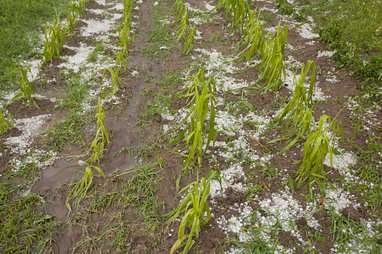AIR Worldwide makes Crop Hail Model available in Ontario
By Diego Flammini
Assistant Editor, North American Content
Farms.com
AIR Worldwide, a catastrophe risk modeling firm, announced its Crop Hail Model is now available in Ontario.
The software, known as CATRADER, compiles nearly 10,000 simulations of potential annual hail activity. It analyzes the unique impact hail can have on a number of crops including corn, soybeans, wheat, canola, oats and potatoes.
The collection of information allows insurers to provide farmers with the best possible crop insurance options.
“While severe thunderstorms with large hailstones can destroy entire crop fields, even smaller storms with smaller hailstones can critically injure plants, tearing leaves or bruising stems, and thus put a dent in crop yield,” Dr. Jeffrey Amthor, principal scientist with AIR Worldwide, said in a June 26 release. “AIR’s new crop hail model provides an in-depth understanding of where crop hail damage occurs in Canada and why and how crop damage varies by crop species and developmental stage.”

Canadian farmers spent more than $13 million on private hail insurance in the first quarter of 2017, according to Stats Canada.
“Hail is a significant peril in Canada, causing damage to crops as well as to property and vehicles,” Ken Doleman, president and CEO of Palliser Insurance Company, said in the statement.
The Crop Hail Model is also available in Manitoba, Alberta, Saskatchewan, British Columbia, Quebec and the Maritimes.